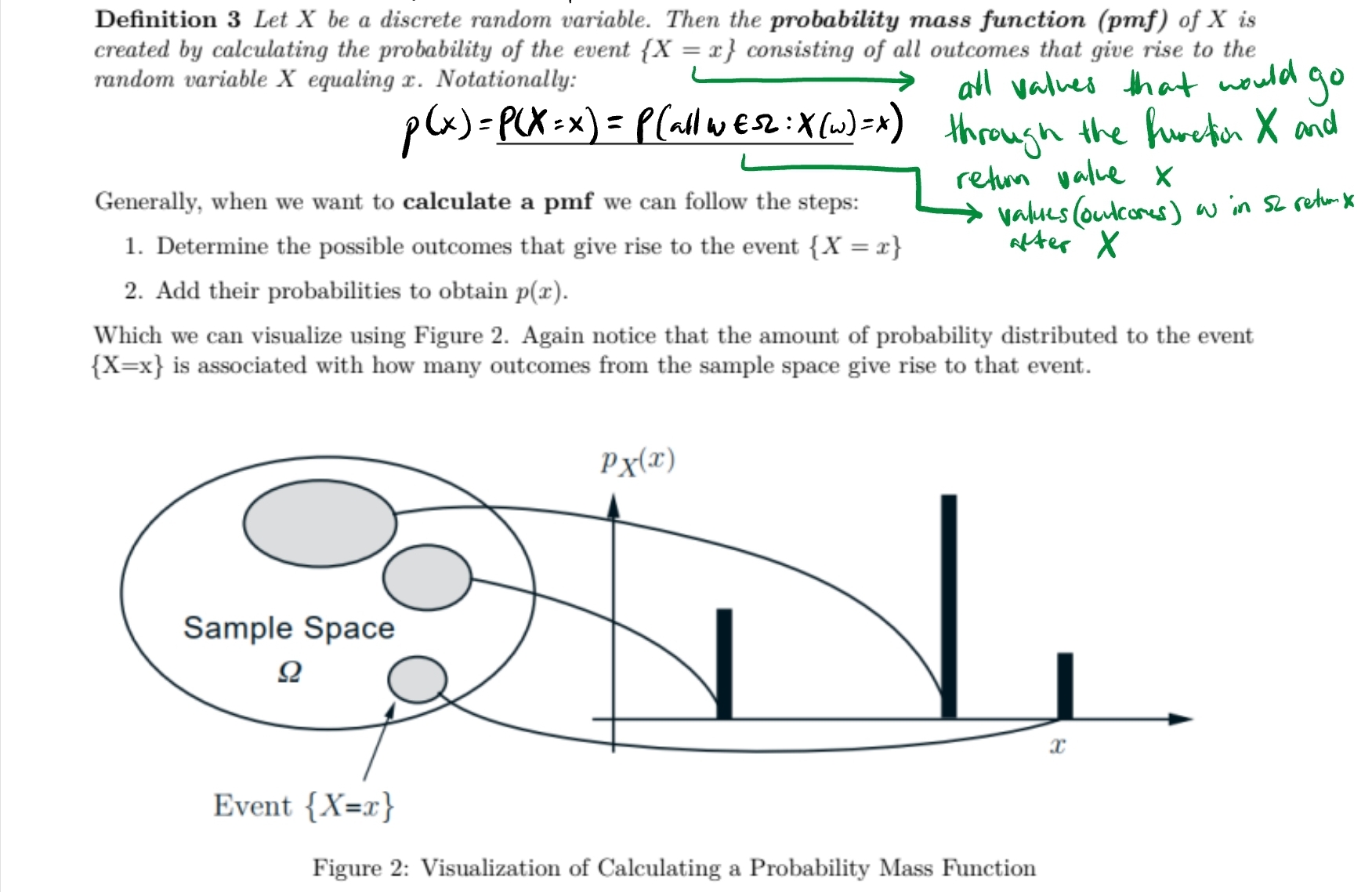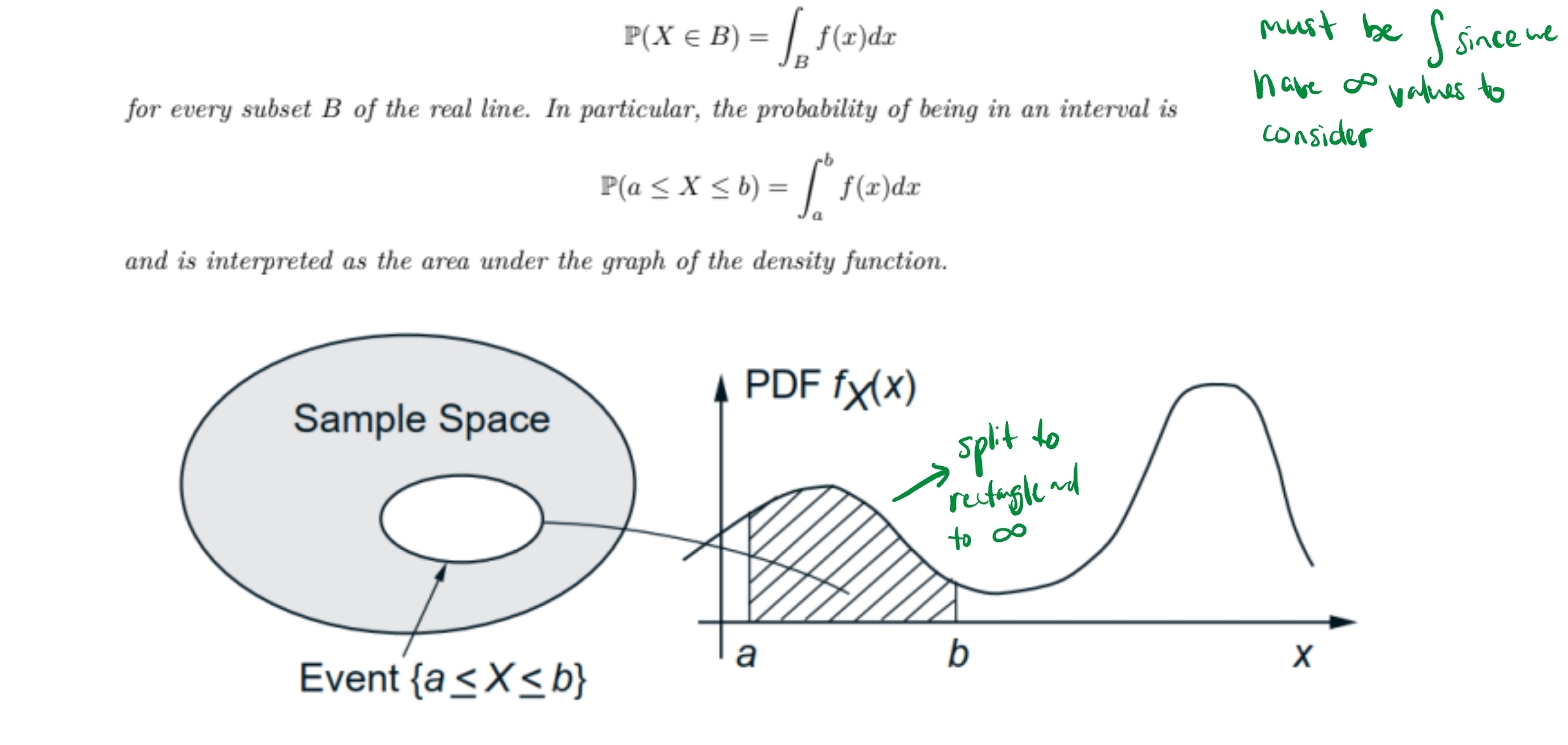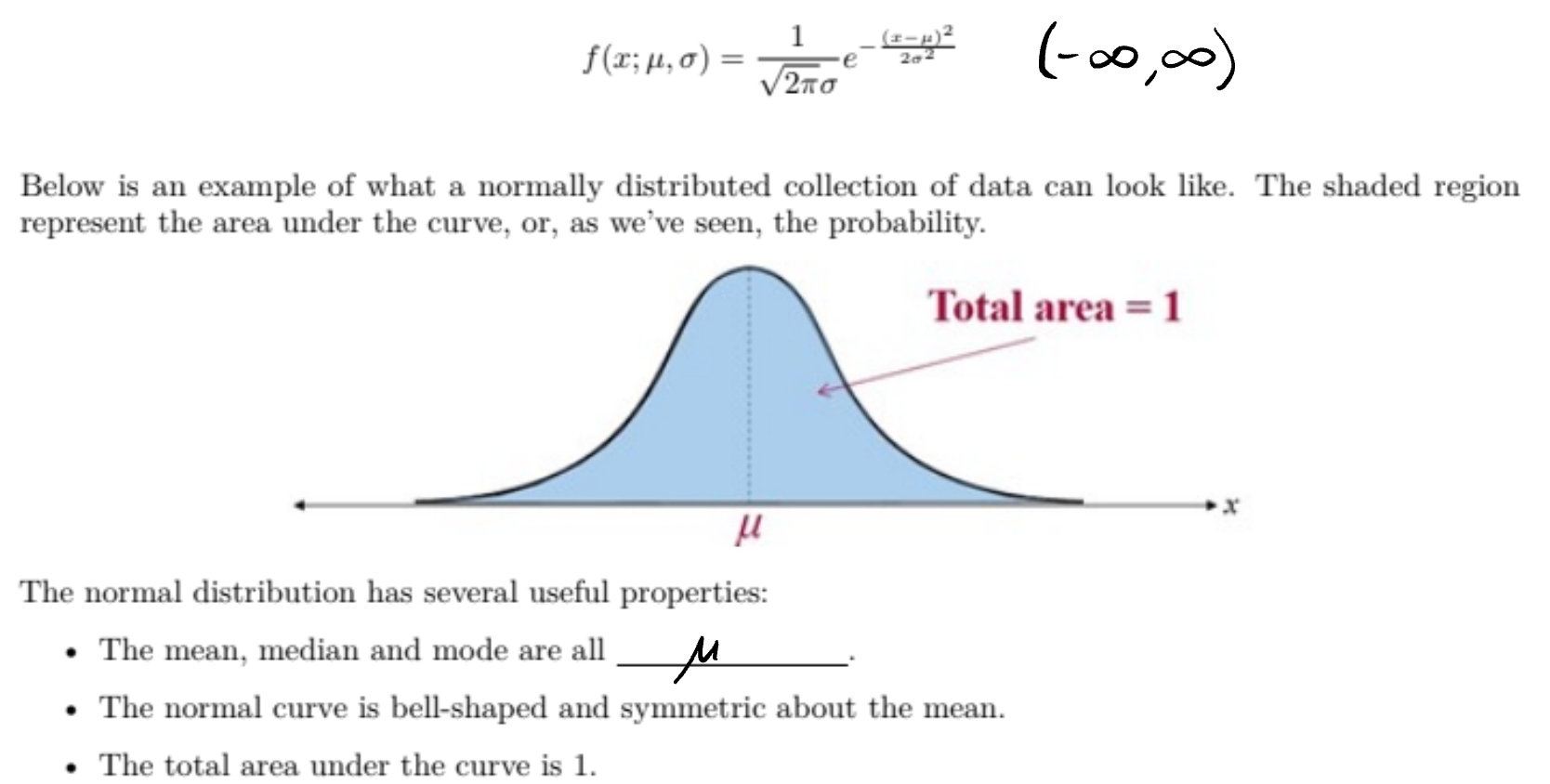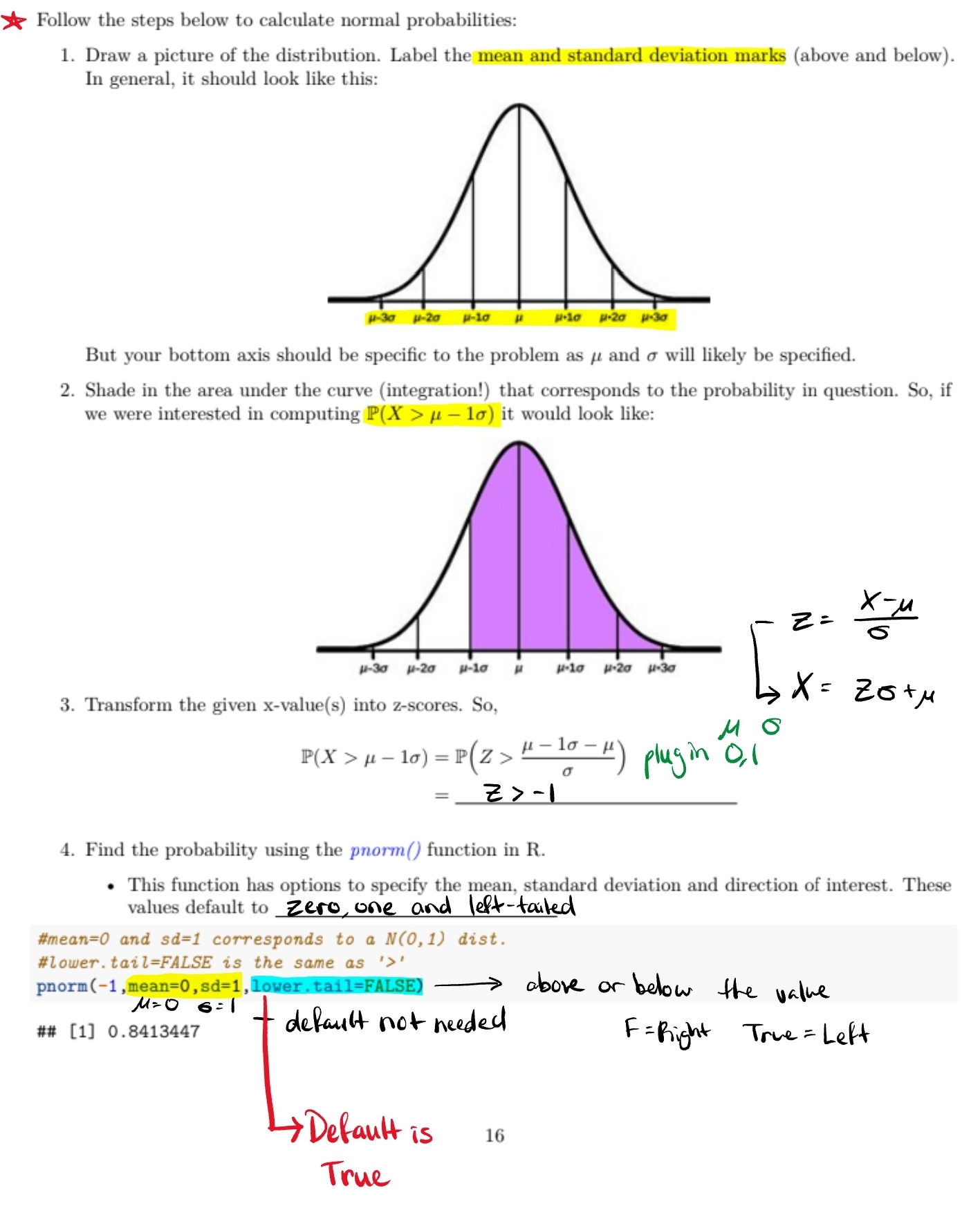Random Variables and Probability Distribution
1/18
Earn XP
Description and Tags
We are exploring how we divided up the probability of outcomes in the sample space.
Name | Mastery | Learn | Test | Matching | Spaced |
|---|
No study sessions yet.
19 Terms
What does this topic of Random Variable and Probability Distribution?
We are talking about creating a function that relates the outcomes in a given sample space to with real numbers (used to be equally likely). These will help distribute the probability of an event.
Random Variable
For a given sample space Ω, of some experiment a random variable is any rule(function) that associates a number with an outcome in the sample space. It’s a function we put an outcome in and get a real number out
Type of Random Variables
These function can be either finite, countably infinite or uncountably infinite.
Discrete: finite set or countably finite set
Continuous: 1) uncountably infinite 2) For a single value c the function is 0 P(X=c)=0
Probability Distribution
These are functions that tell us how to distribute the probability to the values of the Random Variable
Discrete Probability Distributions
For Discrete cases we use Probability Mass Functions
Probability Mass Functions (PMF) — p(x)
Probability of an event {X = x} so all of the values that go into X and the output is x, these apply to continuous probability distributions
1) Determine the possible outcomes of some event
2) Add their probabilities to obtain p(x)

Bernoulli Random Variable: Explain and give shorthand
This is a random variable that only has two outcomes. Basically a yes or no situation.
X is either yes (1) if it’s in the category of interest or No (0) if not.
These 1 or 0 values are not fixed can be anything
Short hand: X ~ Bern(p) , X is defined by a Bernoulli distribution with parameter p

Parameters
inputs within the PMF that change the probability distribution
Binomial Experiment
This is just context, basically its a bunch of Bernoulli random variables together. n trails with either yes or no. AND each trail is independent and has the same probability of occurring.
Binomial Random Variable: Explain and give shorthand
X associated with a binomial experiment consisting on n trails and the function(X) is the number of success trails (x results in 1).
We want to figure out how many ways X can end up as success (matter the amount of trials and probability)
Shorthand : X ~ Bin(n,p)

Poisson Random Variable: explanation and shorthand
Type of data dealing with counts the pmf is given by (the image) and most likely values are around the parameter (λ)
X ~ Poisson (λ=1)

Probability Density Functions (pdf)
these are the continuous type of probability distribution functions of X.
X is continuous if there is nonnegative function (pdf) such that
for PDF since we are dealing with continuous the outer bounds do not matter since X cannot have a value for a single input (since we are talking about infinite values)

Support Set
the collection of possible values that X could be
Exponential Distribution
This is a common pdf with a scale factor of λ where λ is >0 if the pdf follows (image)

Normal Distribution - explain and give shorthand
For a random variable X has a normal distribution with parameters μ (mean) and σ (standard deviation) if the density curve is (image) from (-inf,inf)
X ~ N(μ (center) , σ (scales))

Calculating Normal Distribution
Instead of doing an integration (since it would take way too long and different for many values) we use a formalized way. Standard Normal Distribution, this means we keep the parameters 0,1 respectively.
We transform it into a Z-score
Z-Score
Z = X - μ/σ
(+) is above average
(-) is below average
We use this because the area under the curve (needed info) is the same for both
Solving Normal Distribution

Cumulative Distribution Functions (cdf)
These are used to come up with pmf and pdf from the CDF short of allow you to get values from the tables and subtract them (discrete) together or differentiate them (continuous).
No in between values so s step function with values from the tables of probabilities